Key takeaways:
- Social-emotional learning (SEL) enhances emotional awareness, leading to healthier relationships and improved collaboration.
- Music education fosters self-esteem, resilience, and essential life skills through collaboration and emotional expression.
- Integrating SEL in music classes encourages emotional regulation and deepens understanding among students through creative expression.
- Practical activities like the “Emotion Wheel” and music journaling promote exploration of emotions and self-discovery in students.
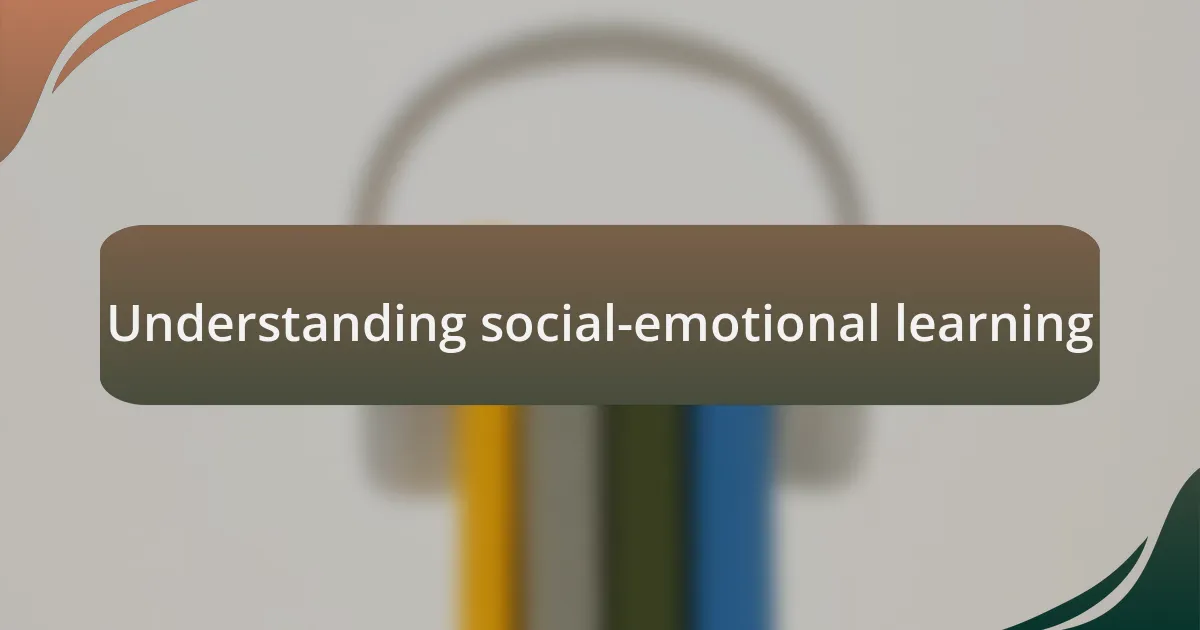
Understanding social-emotional learning
Understanding social-emotional learning (SEL) is pivotal in shaping how individuals interact with themselves and others. For me, navigating my emotions during stressful times often felt like wandering through a dense fog—unclear and daunting. Many might wonder, how does one begin to break through those feelings? SEL equips individuals with the tools to understand and manage their emotions, laying the groundwork for healthier relationships.
As I reflect on my own experiences in music education, I remember being part of a group where emotional expression was not only encouraged but celebrated. This environment fostered a sense of belonging and allowed me to tap into my feelings authentically. It’s illuminating to consider how SEL promotes empathy and self-awareness. Have you ever considered how recognizing your feelings can enhance your collaboration with others? I’ve seen firsthand how understanding emotions can lead to more harmonious interactions among peers.
The core components of SEL—self-awareness, self-management, social awareness, relationship skills, and responsible decision-making—intertwine seamlessly with the arts. Imagine a musician who understands their emotional state as they perform. How much more profound is their connection to the music? Personally, I’ve felt that deep connection, transforming a simple performance into an emotional journey that resonates not just with me but with the audience as well. Understanding SEL is not just an academic concept; it’s a cornerstone for personal growth and enriched experiences in every setting, including music education.
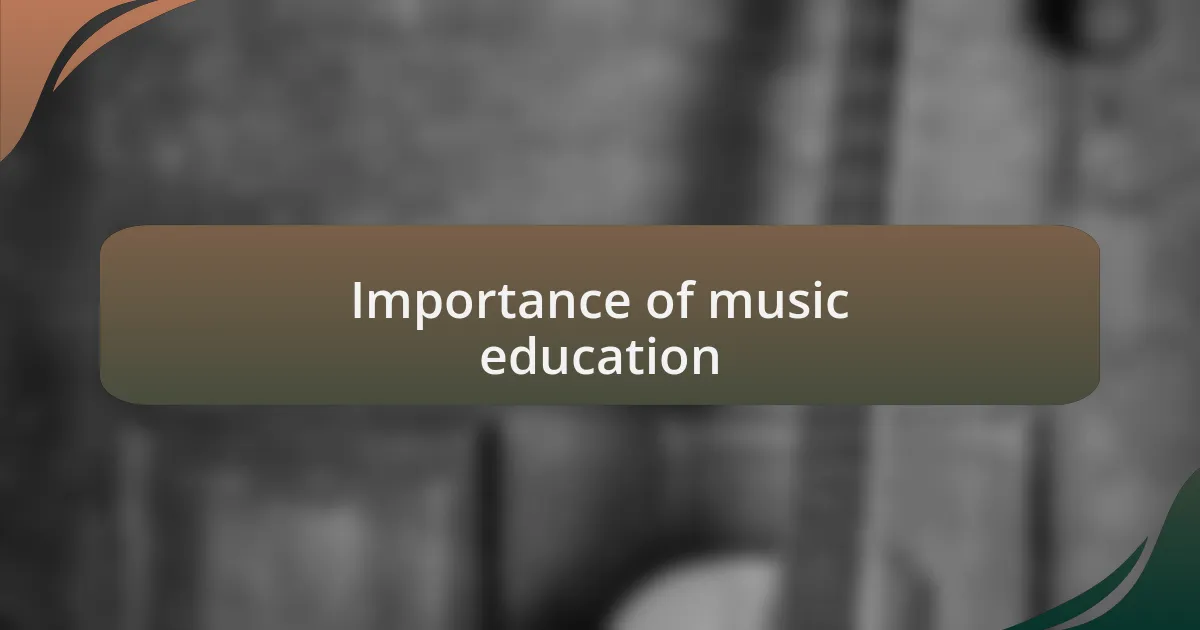
Importance of music education
Music education holds a profound importance that goes beyond mere theory and notes. In my own journey, learning an instrument was a ticket to a deeper understanding of my emotions. I still remember those moments when I struck the right chord after weeks of practice, feeling an exhilarating rush of joy and accomplishment. Isn’t it remarkable how music can foster self-esteem and resilience in students?
Beyond building technical skills, music education nurtures essential life skills. Collaborating with others in ensemble settings taught me the value of compromise and teamwork. Reflecting on these experiences, I often ask myself how I would have navigated social dynamics without the shared purpose of creating music together. It’s clear to me that these lessons extend far beyond the classroom, shaping how we engage with the world.
Moreover, music offers a unique platform for emotional expression. Each note carries the weight of our feelings, and I’ve found that sometimes the music says what words fail to convey. Have you ever felt a song capture your mood perfectly? In my life, certain pieces have echoed my journey, allowing me to process my experiences. This emotional connection not only enhances our personal lives but also cultivates empathy, creating a richer, more connected community through the universal language of music.
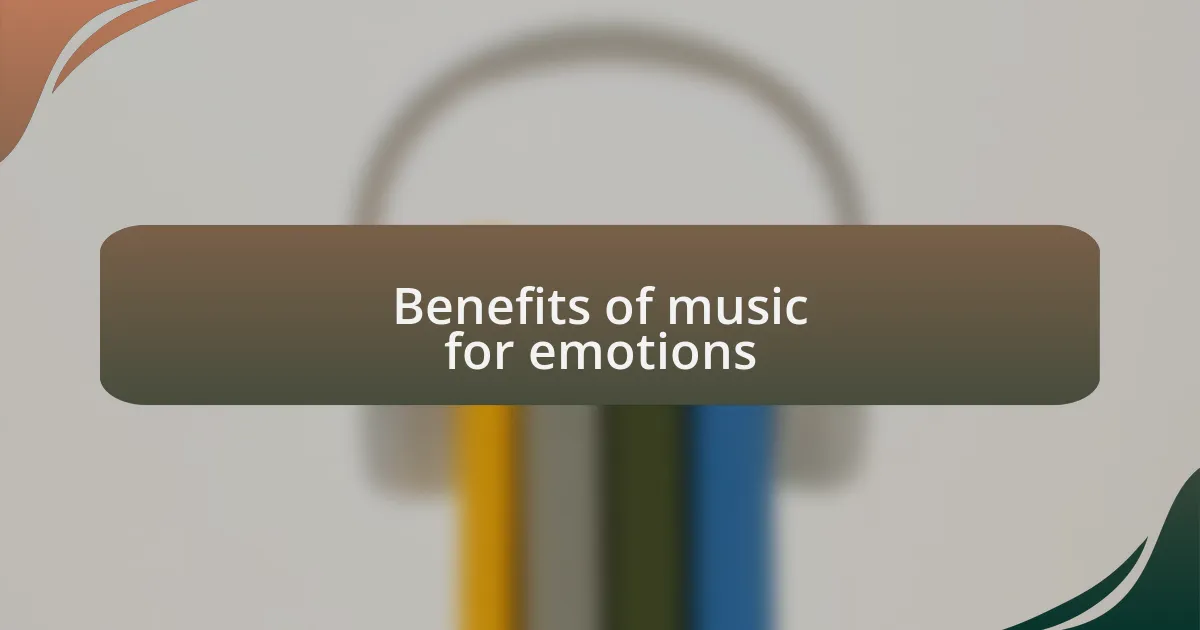
Benefits of music for emotions
One of the most striking benefits of music is its ability to evoke and channel emotions. I’ve often found solace in melodies during tough times; there’s this extraordinary way music invites feelings to surface. Have you ever listened to a song and suddenly felt a wave of nostalgia or joy? It’s fascinating how specific tracks can take us back to moments in our lives, recreating emotions almost instantly.
When I play my favorite pieces, I notice my mood shifts remarkably. It’s as if the act of playing translates my feelings into sound, offering clarity when I feel overwhelmed. I recall a night where playing the piano transformed my anxiety into calm, each note resonating with my innermost thoughts. Isn’t it amazing how music creates a safe space for emotional exploration, allowing us to express what might otherwise remain unspoken?
Moreover, engaging with music can also promote overall emotional well-being. I’ve observed that participating in group music-making can elevate collective moods, providing a sense of belonging and connection. Think about those moments when you sing along with friends; the laughter and joy shared in those instances create bonds that lift our spirits. It’s these experiences that highlight music’s profound role in enhancing our emotional landscape, making it a powerful tool for personal and social growth.
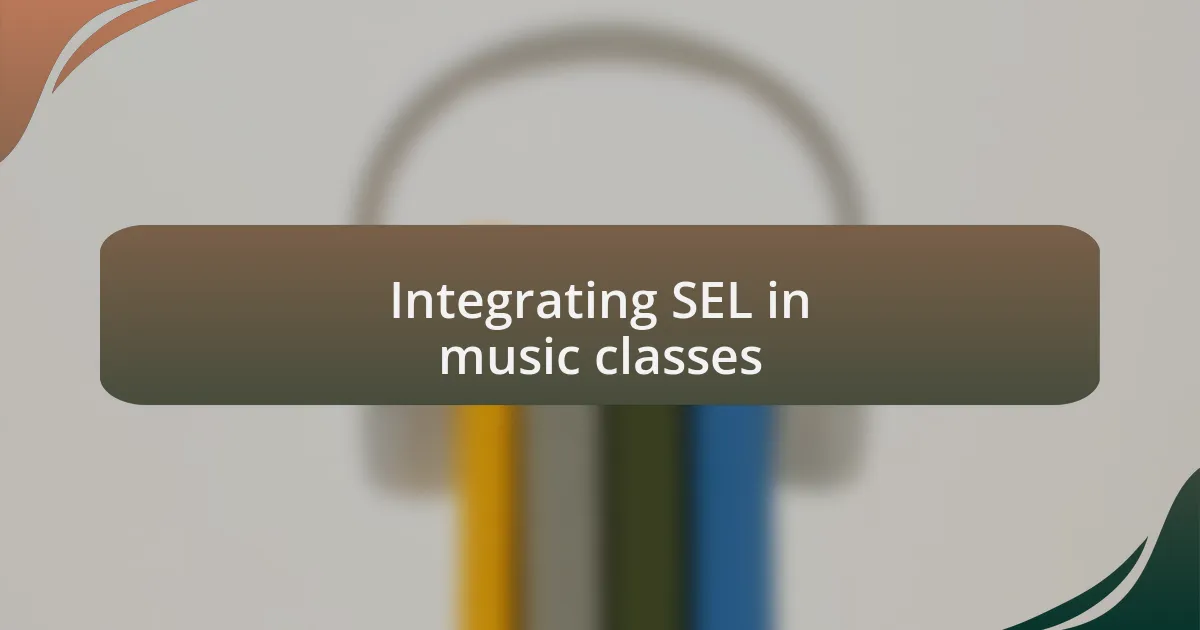
Integrating SEL in music classes
Integrating social-emotional learning (SEL) in music classes enriches the educational experience considerably. I remember my first group project where we had to create a song about friendship. Collaborating with my peers not only strengthened our musical skills but also deepened our understanding of one another’s feelings. Have you considered how crafting lyrics together can unveil vulnerabilities and foster empathy among students?
In my own journey as a music educator, I’ve found that incorporating themes of emotional regulation into lessons can be incredibly impactful. For instance, teaching students to express their emotions through composition allows them to process their feelings more authentically. When I guided a class to write music reflecting their experiences with stress, the end results were profound—each piece was a window into individual challenges and resilience. Isn’t it incredible to witness young musicians channel their emotions into something creative?
Moreover, discussions about the emotions invoked by certain pieces can create a classroom climate that prioritizes emotional intelligence. I frequently ask my students how a particular song makes them feel and share my own reflections, making the space feel safe for open dialogue. This exchange not only builds trust but also reinforces the idea that emotions are not just relevant in music; they’re key to understanding ourselves and each other on a deeper level.
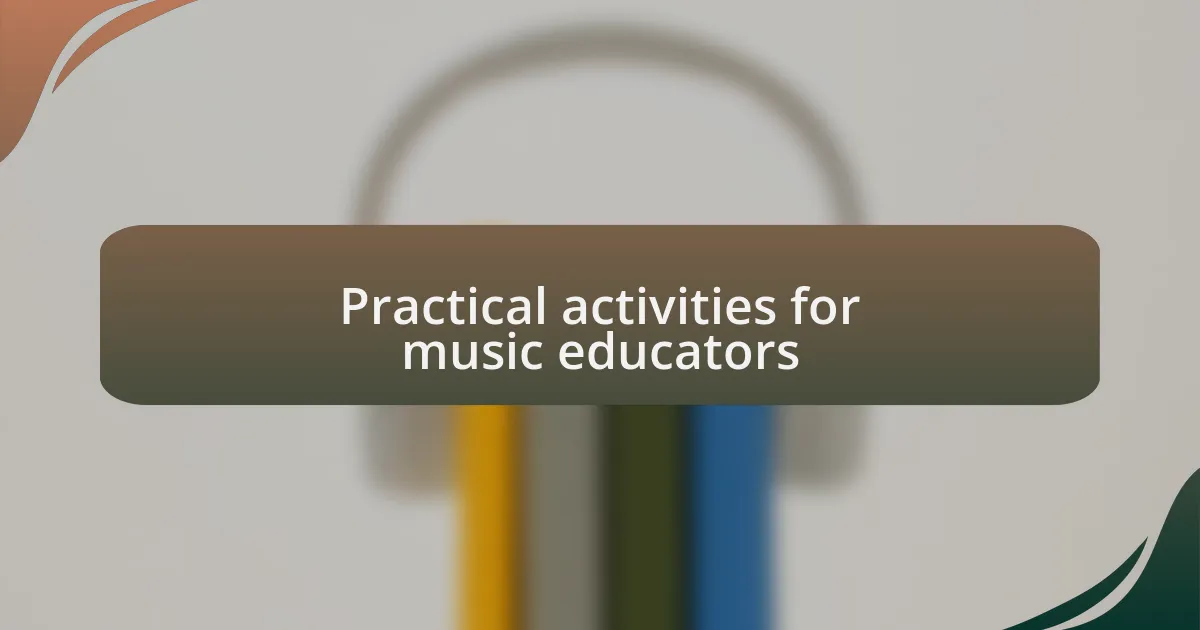
Practical activities for music educators
In the realm of music education, one practical activity I’ve found incredibly effective is the “Emotion Wheel” exercise. I have my students create their own wheel with various emotions, then select a piece of music that resonates with each feeling. This process not only enriches their emotional vocabulary but also allows them to explore how different compositions can evoke distinct responses. Have you ever noticed how a simple melody can instantly uplift your mood or trigger a memory?
Another engaging activity involves improvisational performances focused on mood interpretation. I often assign small groups to improvise short musical phrases that reflect a specific emotion, like joy or sadness. The collaboration in these sessions leads to fascinating discussions about their choices, and quite often, students find unexpected connections to their own lives. It’s amazing to see them realize that music can be a bridge to their own inner experiences—have you seen that spark of self-discovery in your students before?
Finally, I recommend creating a music journal where students can document their emotional responses to both their experiences and the pieces studied in class. I’ve seen how journaling can unlock deeper reflections, encouraging students to articulate feelings they might otherwise keep bottled up. Isn’t it rewarding when students express their emotions and connect them to their musical journey? This practice not only fosters personal growth but also cultivates a community of empathy and understanding among peers.